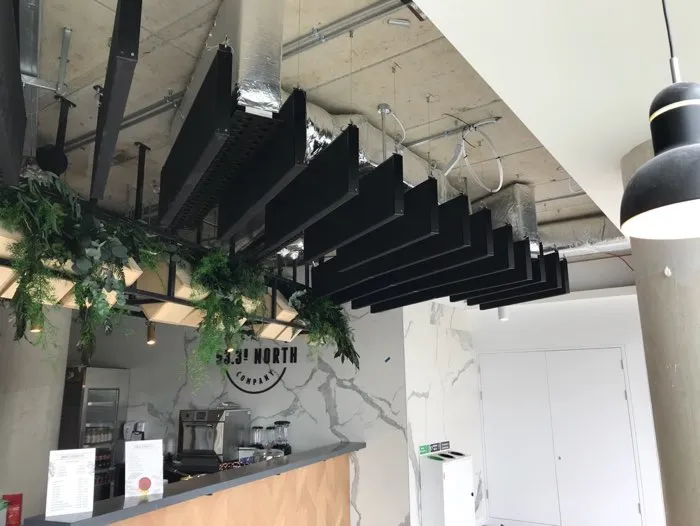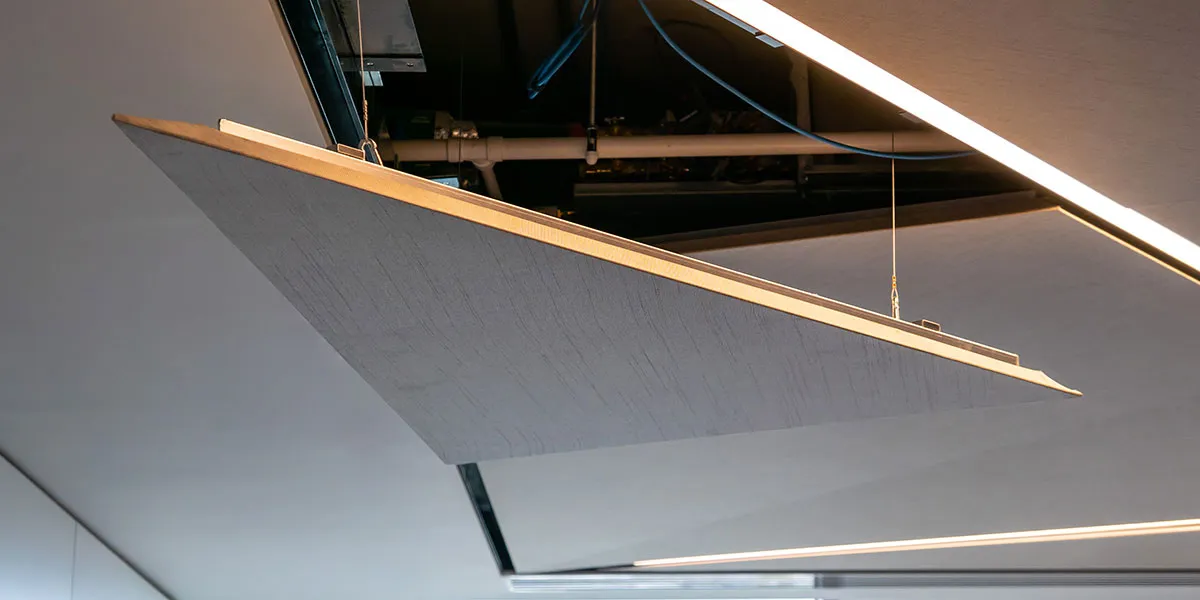Maximise Workplace Productivity While Improving Interior Design
In the modern world, we are constantly exposed to noise, making it difficult to focus and be productive. However, a silent workspace can be a haven of peace and productivity. Acoustic ceiling panels can help create a soundproof environment that reduces external noise, leading to better focus, fewer distractions, and improved well-being.
A recent survey conducted by Oxford Economics sheds light on an issue that plagues office workers across the world: noise. Out of the 200 respondents, a staggering 92% reported that noise posed a major distraction in the workplace. It’s no wonder then that over half of them (51%) also reported that noise had a negative impact on their productivity. Investing in effective acoustic design is a win-win situation and one that businesses should not overlook if they want to maximise their productivity and success.
The Benefits of Acoustic Ceiling Panels
Acoustic ceiling panels have become a popular solution for creating a quieter work environment. And it’s not just anecdotal evidence supporting their effectiveness – a recent study by the Center for the Built Environment found that the use of these panels in a call centre resulted in a staggering 52% reduction in noise-related distractions.
Research conducted by the University of California, Berkeley revealed that open-plan offices can lead to a 66% increase in distractions and a 50% decrease in productivity. And it’s not just productivity that these panels improve. A survey of 500 employees found that 90% of respondents reported that reducing noise levels would increase their satisfaction with their workplace.

Materials and Design Options
One popular choice of materials to use is foam, which boasts excellent fire resistance properties and thermal and acoustic performance. Basotect®, in particular, is a lightweight, open-cell melamine foam that achieves a Class O fire rating at 25 mm, making it ideal for simple ceiling applications without a fabric face.
Mineral fibre is another go-to option for those seeking rigidity and multi-functional use as a pinboard. It achieves Class C sound absorption at 25mm and Class A at 50mm and has a density of 94kg per m², making it a great choice for absorbing sound in a variety of settings.
For those looking for eco-friendly options, polyester is a lightweight fibre product sourced from sustainable materials. It achieves Class C sound absorption at 25mm and Class A at 50mm, as well as Euro Class B at EN 13501. This type of core is perfect for ceiling applications, as it can be used over restaurant areas where strict fire regulations are in place.
These panels can be integrated with lighting and textiles from leading manufacturers. Want something bespoke? Our In-house laser etcher and graphics printer can bring your dream vision to life. With so many choices available, creating a quieter environment has never been easier.
Noise Reduction Coefficient (NRC) Rating: A Crucial Metric
The Noise Reduction Coefficient (NRC) rating is a numerical index that quantifies the sound absorption properties of a material. It ranges from 0 to 1, with higher values indicating better sound absorption. An NRC rating of 0 implies that a material reflects all sound energy, while a rating of 1 signifies that the material absorbs all sound energy.
The NRC rating is derived from the average absorption coefficients of material at specific frequencies (250, 500, 1000, and 2000 Hz). These frequencies represent a range of sounds commonly encountered in everyday environments, from low-frequency rumbles to high-frequency speech and music.
The NRC rating plays a crucial role in selecting materials and designing spaces with optimal acoustical performance. By utilising materials with high NRC ratings, architects and acousticians can effectively reduce noise pollution and improve speech intelligibility within a space. This is particularly important in settings such as offices, classrooms, and conference rooms, where clear communication is essential.
However, it is important to note that the NRC rating is only one aspect of a material’s acoustical performance. Other factors, such as the material’s thickness, density, and installation method, can also influence its sound absorption capabilities. Additionally, achieving the right balance between absorption, reflection, and diffusion is key to creating an acoustically pleasing environment. For example, in a concert hall, excessive sound absorption can result in a lack of reverberation and a dull listening experience, whereas too little absorption can lead to excessive echoes and poor speech intelligibility. Check out our projects for inspiration.

Energy Savings and Improved Environmental Sustainability with Acoustic Design
By implementing thoughtful acoustic design strategies, architects and engineers can create spaces that are not only acoustically pleasant but also energy-efficient and eco-friendly.
One of the primary ways acoustic design can contribute to energy savings is through the reduction of heating, ventilation, and air conditioning (HVAC) loads. By selecting materials with high sound absorption capabilities, such as green roofs and vegetated facades, architects can minimise the transmission of exterior noise while providing additional insulation. This natural insulation helps maintain a stable indoor temperature, reducing the need for HVAC systems to work harder and consume more energy.
Moreover, the strategic placement of sound-absorbing materials can also improve the overall thermal performance of a building. For instance, incorporating high-performance acoustic insulation materials in walls, ceilings, and floors can help prevent heat transfer, thereby reducing energy consumption related to heating and cooling.
Another aspect of sustainable acoustic design is the use of eco-friendly materials. Acoustic panels made from recycled or renewable materials, such as recycled PET bottles or sustainably harvested wood, can contribute to a building’s overall environmental sustainability. These materials not only offer sound absorption properties but also reduce the carbon footprint of the building. So don’t wait any longer – explore the options available by Vibe and find the perfect fit for your space!


